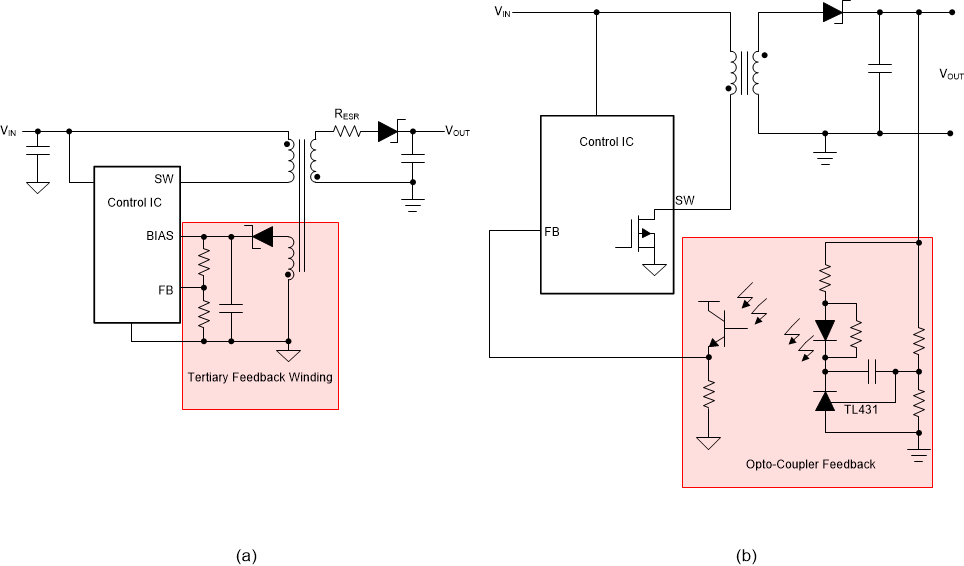SLOA285A October 2019 – October 2020 ISO7741 , ISOW7841 , LM25037 , LM25180 , LM5180 , LM5181 , LM5181-Q1 , UCC12040 , UCC12050
2 Flyback Topology
A typical conventional Flyback converter is a buck-boost converter with the inductor split to form a transformer, so that the voltage ratios are multiplied with an additional advantage of isolation. It can generate voltages below or above the input voltage and can support output power levels easily up to 10s of watts (depending upon the transformer design). To get the isolated output information back to the Flyback controller (aka PWM controller) device in order to accurately regulate the output, the output is fed back using either an opto-coupler based circuit or a tertiary winding as shown in Figure 2-1. In such cases, the component count and the solution size is fairly large. In fact, reliability can be a concern with opto-coupler based feedback and an additional winding (for tertiary winding based feedback) adds to the cost of the transformer.
It is important to properly design the Flyback transformer for best performance. The transformer should be very well coupled with low leakage inductance for highest efficiency and best regulation (especially in multiple outputs). The parasitic capacitance from the primary to secondary must also be limited to prevent excessive Electro-magnetic Interference (EMI).
 Figure 2-1 Conventional Flyback Feedback Mechanism (a) Using Opto-Coupler (b) Using Tertiary Winding
Figure 2-1 Conventional Flyback Feedback Mechanism (a) Using Opto-Coupler (b) Using Tertiary Winding